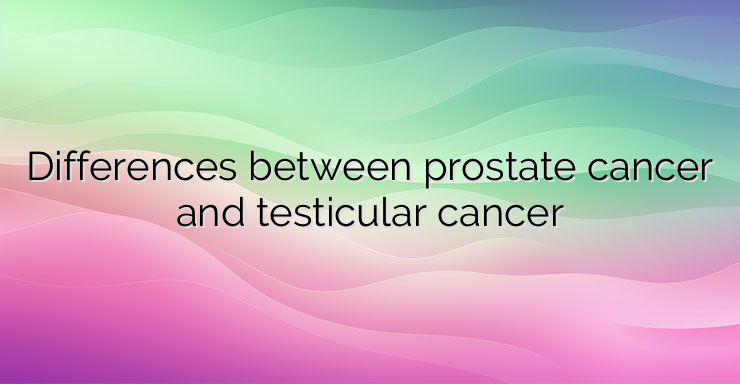There are some differences between prostate cancer and testicular cancer, although both cancers arise in the male reproductive system. For example, prostate cancer is most common in men over 40, but testicular cancer is more common in men aged 20�34. Risks Cryptorchidism (the undescended, retained testicle) is one of the main risk factors for testicular cancer. The condition occurs when one or both testicles fail to settle into the scrotal sac. Other risk factors for testicular cancer may include: HIV infection; Greater height; carcinoma in situ of the testis. Scientists have identified several gene mutations that are inherited and increase the risk of prostate cancer, such as mutations in the BRCA1 or BRCA2 genes. Symptoms The main symptom of testicular cancer is the appearance of a painless lump in the testicles. Other symptoms include: Swelling of the testicles; Sensation of heaviness in the scrotum; Pain in the testicles, scrotum, or groin; Breast tenderness and/or growth. Although rare, some testicular tumors produce hormones that cause breast tenderness and enlargement (gynaecomastia). Prostate cancer symptoms largely affect urinary habits and include: Poor urine flow; Frequent and urgent need to urinate; Waking to urinate several times during the night (nocturia); Difficulty emptying the bladder; Pain or burning during urination or ejaculation; Blood in the urine or semen; Signs of anemia, such as pale skin; Pain in the back, hips or pelvis. Diagnosis Although a physical examination performed by a specialist can help diagnose both conditions, testicular cancer is more easily identified through self-examination than prostate cancer. This is because it is easier to access the testicles, where the cancer usually causes detectable lumps. Blood tests for both diseases also examine serum levels of various substances. For testicular cancer, the alpha-fetoprotein (AFP) test and the beta-human chorionic gonadotropin (?-hCG) test are used, while the prostate cancer test checks for elevated prostate-specific antigen (PSA). Complications Both types of cancer can be fatal without treatment. However, testicular cancer is very treatable and has a lower risk of death. Prostate cancer is much more life-threatening than testicular cancer, in part because of its greater incidence. Prostate cancer is also curable and most patients with this disease do not lose their lives from it. Screening Options Men can perform self-exams to identify testicular cancer. This is usually done after a bath or shower by gently palpating each testicle with your fingers to check for lumps. It is necessary to look for lumps or swollen areas, even if they do not cause pain. A man should contact a doctor if he notices an unusual growth on his testicles.There are currently no standard screening tests available for prostate cancer. However, certain tests are recommended if the patient meets risk factors and experiences pain or difficulty urinating. Screening options include: Rectal prostatic douching, in which a professional inserts a finger into the patient’s rectum to check for lumps; PSA tests, which measure the amount of prostate-specific antigen (PSA) in the blood; Genetic tests that identify specific genes. They are still undergoing clinical trials. Precautions It is not always possible to prevent prostate or testicular cancer. However, the following considerations may reduce the risk of prostate cancer: Maintaining a healthy body weight; Regular exercise; Maintaining a healthy diet; Avoiding smoking; Taking testosterone-5-alpha reductase inhibitors; Taking aspirin. However, experts know much less about measures to prevent the occurrence of testicular cancer. It is currently not possible to prevent the development of testicular cancer. References: 1. National Center for Biotechnology Information (NCBI). Gurung, P., et al. (2021). Physiology, male reproductive system 2. American Cancer Society. Prostate cancer 3. American Cancer Society. Testicular cancer 4. Cancer Research UK (CRUK). Men and cancer


Leave a Reply